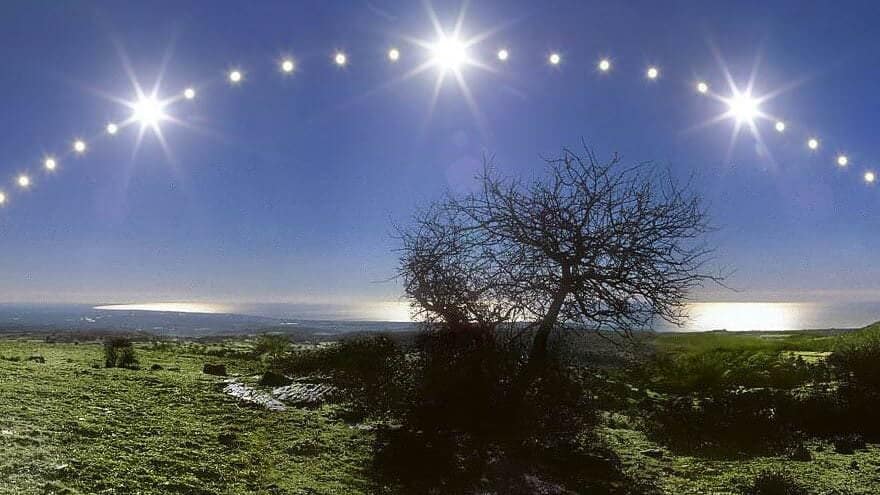It is common knowledge that the sun acts as the central star around which the Earth and other planets orbit. It is widely known that this celestial body rises in the East and sets in the West. However, not everyone is aware of the specific location where the sun sets and the reasons behind it. In the following article, we will explore the topic of the sun’s appearance and disappearance in the sky.
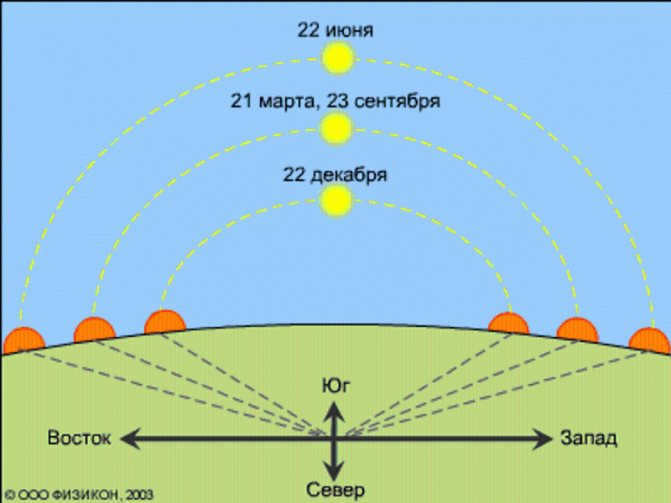
Motion of the Sun
Once the sun rises above the horizon, it continues its uninterrupted journey across the sky. Throughout the course of the day, one can observe the movement of the sun across the celestial sphere. In reality, it is not the sun that moves, but rather the Earth that revolves around the star. This entire process takes approximately 24 hours.
It is quite simple to comprehend why a room in an apartment, situated in the southern direction, always receives more sunlight compared to rooms facing other directions. This phenomenon occurs due to the sun’s trajectory along the southern projection of the horizon during the day until it reaches its highest point. This entire process is scientifically known as the culmination of a celestial body.
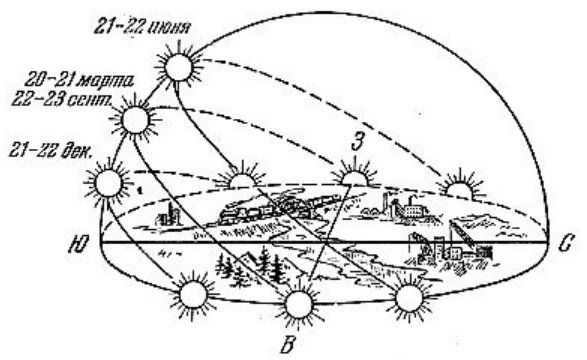
Theoretical Principles
Let’s outline the fundamental principles, verified facts, and some logical deductions derived from them.
Fact #1. The sun is orbited by the earth.
Fact #2. When observed from above the north pole, the earth rotates counterclockwise. As a result, the sun initially illuminates the eastern regions. However, to an observer on earth, it appears that the sun rises in the east and sets in the west.
Based on the same fact, it can be inferred that during its midday movement, which corresponds to the midpoint between east and west, the sun will reach its highest point in its trajectory – the zenith. Simultaneously, it will be positioned along the north-south axis.
If we consider a scenario where the observer is positioned in the northern hemisphere, it becomes apparent that the Sun’s movement on the celestial sphere is from left to right. In the case where the observer relocates to the southern hemisphere (such as Australia), the Sun’s motion will be perceived as moving from right to left. However, it is worth noting that this pattern primarily applies to middle and high latitudes, as in tropical zones and at the equator, the phenomenon can vary, as we will explain further.
Truth #3. The Earth’s axis of rotation is inclined at an angle of 23.44 degrees in relation to the Sun. This, combined with the Earth’s orbit around the Sun, results in the Sun’s trajectory on the celestial sphere being shifted from higher to lower at different times of the year for an observer situated at a specific point on Earth.
When the Sun is higher above the horizon, its rays will hit the Earth’s surface at a greater angle, resulting in more sunlight reaching a given area. This increase in light leads to warmer temperatures and the arrival of summer. Conversely, when the Sun is lower, less light falls on the Earth’s surface, causing temperatures to drop and winter to set in.
Because of the tilt of the Earth’s axis, the seasons are opposite in the northern and southern hemispheres. So, when it’s winter in the northern hemisphere, it’s summer in the southern hemisphere, and vice versa.
By comprehending these processes, it is simple to predict that the Sun will ascend precisely in the east and descend exactly in the west exclusively during the spring and fall equinoxes, when the duration of the day equals the length of the night. From March to September, the Sun will ascend in the northeast and descend in the northwest, while from September to March, it will rise in the southeast and set beyond the horizon in the southwest.
In order to determine the Sun’s position at noon, it is necessary to ascertain the location of the observer on Earth.
Let’s take a look at the period from June to December in the northern hemisphere as an example. During this time, the Sun will be positioned in the southern sky in the middle and high latitudes. However, at the equator, the Sun will first be in the northern sky and then move to the southern sky. In the tropics, the pattern will be similar to that at the equator, but with one exception – the Sun will spend fewer days in the northern sky. This difference becomes more pronounced the further away from the equator and closer to the temperate zone the observer is located.
On the other hand, from June to December, the situation is reversed in the northern hemisphere. It’s important to note that this stability only applies to the middle and high latitudes, where the Sun will always be in the southern sky at noon throughout the year.
By examining this diagram, one can calculate the position of the midday Sun in the southern hemisphere. In contrast to the northern hemisphere, everything will be reversed here.
Fact #4. The Earth rotates at an angular velocity of approximately 15 degrees per hour. Consequently, the movement of the Sun as observed from the Earth across the sky occurs at a similar speed.
Fact #5. If you face north, you will see south behind you, east to your right, and west to your left.
Now that we have covered the theoretical aspect, it is time to delve into the various methods of navigating using the Sun.
How the duration of the day is influenced by sunset
It is a commonly known fact that the length of the day varies significantly between winter and summer. During the warmer months, the daylight period appears much longer than in winter. Surprisingly, this phenomenon can be easily explained. The duration of daylight is directly determined by the sun. Some people mistakenly believe that the length of the day is influenced by the speed of the sun’s movement across the sky. However, this is a complete misconception. In reality, the length of the day is determined by the point at which the sun rises and sets. As one would expect, these points change throughout the calendar year.

North Pole and other regions around the globe
If an individual were to observe the movement of the primary celestial body from the North Pole, they would witness the Earth rotating counterclockwise, along with the location where the sun sets and how it rises. From a visual standpoint, the movement of the celestial object would appear to be from east to west. In reality, it would move towards the east while the Earth simultaneously rotates on its axis.
Interestingly, the sunrise does not occur simultaneously in different areas of the world. For instance, on the eastern coast of the United States, it transpires approximately 3 hours earlier compared to those regions on the western coast. Consequently, the sunset also takes place at varying times across different parts of the globe.

The Path of the Sun’s Descent
The sun only descends in the western sky twice a year. These occurrences take place on March 20 and 21, as well as September 22 and 23. These specific dates are known as the equinoxes, during which the sun sets directly in the west. Additionally, the duration of daylight on these days totals twelve hours. It is possible that these are the sole occasions when the sun genuinely descends in the western region of the horizon.
Once the spring equinox has passed, the sun starts to rise higher in the sky, which is why the length of the day starts to increase. As a result, the points of sunset and sunrise gradually move closer to the north with each passing day. This process continues until June 21. On this particular day, the summer solstice occurs. It is during this time that the point of sunset is at its maximum position in the north, resulting in a longer duration of daylight.
In cities located above the Arctic Circle, the points of sunset and sunrise merge into one, causing the sun to never set below the horizon and giving rise to the phenomenon of the polar day.
Starting from June 22nd, the position of the Sun’s sunset gradually moves towards the west and east. The same phenomenon occurs with the sunrise position, resulting in shorter days. From September 23rd onwards, the point where the sun rises begins to approach the point of its sunset, which occurs south of the horizon. This continues until the winter solstice, when the Sun appears and disappears south of its previous positions, making it the longest night of the year in this period.

One interesting fact to note is that on this particular day, the polar day transitions into the polar night. The sun does not appear below the horizon during this phenomenon. The main reason behind this is the convergence of the points where the sun sets and rises in the southern region. After the winter solstice, gradual changes begin to occur. The points of sunset and sunrise start moving in opposite directions, resulting in longer daylight hours.
Where does the Sun go down and where does it come up?
If we look at the Northern Hemisphere, during the summer months the Sun comes up somewhere between the north and east, and goes down somewhere between the north and west. In the winter, it rises between the south and east, and sets between the west and south. In the fall and spring, the Sun rises between the northeast and southeast, and sets between the northwest and southwest. On the days of the fall and spring equinoxes, as previously mentioned, it rises and sets precisely in the east and west, respectively.
In the Southern Hemisphere, it’s the opposite. This is what accounts for the differences in the seasons.
It is worth noting that the variation between night and day becomes more pronounced the further north one goes in the Northern Hemisphere, and the further south one goes in the Southern Hemisphere. In other words, a general rule can be stated as follows: the closer a region is to the pole, the greater the disparity between night and day. Conversely, the closer a region is to the equator, the less noticeable the difference between day and night.
For instance, at the poles, the nights can last for several months, just as the days can. On the other hand, at the equator, there is almost no discernible contrast between night and day. This lack of variation is the reason why the equator experiences a consistent level of illumination throughout the year, without distinct winter or summer seasons.
Characteristics of Daylight Hours in the Southern Hemisphere
In the southern hemisphere, things tend to occur in the opposite way compared to the northern hemisphere. While the northern hemisphere experiences long daylight hours during a certain period of the year, the opposite hemisphere experiences shorter daylight hours. These opposite phenomena can be observed in various aspects. For instance, while the northern hemisphere has the autumnal equinox, the southern hemisphere experiences the spring equinox. Moreover, the sun reaches its highest point in the sky in the northern hemisphere, but in the southern hemisphere, it sets directly in the western part of the sky, just like it does for us.

What are the questions a doctor asks during pregnancy registration?
During the registration process, the doctor records the answers to the following questions in the medical record and exchange card:
- When was your last menstrual period?
- What type of pregnancy is this and what were the outcomes of your previous pregnancies (miscarriages, deliveries, caesarean sections, etc.)?
- Do you have any complaints of painful sensations?
- Do you have any chronic diseases?
- What is your history of gynecologic diseases?
- Are there any hereditary diseases in the family of both the mother and father?
- Have you had any past history of sexually transmitted diseases?
- Have you had any past surgeries and if so, what types of surgeries were performed?
- Are there any known allergies to medication?
- What infectious diseases has the expectant mother had, including during childhood?
- Are there any unhealthy habits?
- What is the expectant mother’s profession and working conditions?
Providing full and honest answers will assist the doctor in gaining a comprehensive understanding of the expectant mother’s health and identifying potential risks during pregnancy. It is important not to hesitate in answering these questions and to prepare responses in advance.
Amazing trivia about the sun and its sundown
The sun has always captivated people’s interest, its position in the sky is a fascinating mystery. Here are some intriguing facts that highlight the sun’s allure.
- As the sun sets, the air gradually grows colder, creating a chilly atmosphere. However, what’s surprising is that the temperature doesn’t reach its lowest point at night. The coldest time is actually in the morning, right before sunrise.
- Every day, people all around the world witness the beauty of the sunset. However, those at the poles can only observe this phenomenon once a year.
- In ancient times, people relied on the position of the sun to measure time. At times, the sun’s descent served as an indicator of the start of a particular time of day. This was accomplished by observing the shadows cast by specific objects. As a result, the first clocks and calendars were developed.
- To observe the sun’s path over a 24-hour period, one can utilize a camera. Simply capture images from a fixed location on Earth at consistent intervals. This process can also be used to track the sun’s movement over days and months.

To wrap up, it is worth mentioning that the sun, being a celestial body, provides us with both heat and light on a daily basis. It is impossible to determine the exact location where the sun sets, as its point of sunset varies throughout the year depending on the season.
What is the movement of the Sun during the day?
Throughout the day, the Sun moves in an elliptical arc from east to west, reaching its highest point at noon.
How is meningitis transmitted? How can a marriage be restored if a spouse is declared dead or missing? How is information inputted into a cell? How is text inputted into a cell? How are warnings issued? Which fire extinguisher should not be used to extinguish energized equipment? What type of personal data is considered when analyzing DNA? What is the mining method used in the Kansk-Achinsk basin? What is the mining method used in the Kuznetsk Basin? What method can be employed to eliminate systematic errors?
Read for 9 minutes
Share

- Natal Astrology
- Relationship Astrology
- Self Development and Psychology
- Predictive Astrology
- Horoscopes and Predictions
- Talismans
- Soul Formula
- Numerology
- Astrological Tarot
- World Astrology
- For beginners
- For professionals
- Development of an Astrologer
Read 9 min
Definition. The ecliptic, known as the path of the Sun, is a circle on the celestial sphere that marks the Sun’s annual movement. This line is crossed by the Moon during a solar eclipse.
What is the impact? However, it is not just the Sun that is associated with the ecliptic. Nearly all the planets in our solar system orbit near its plane, providing further evidence for the theory of their formation. So, how does the ecliptic influence the planets?
The definition of the ecliptic
What exactly is the ecliptic?
What is the ecliptic? It is an imaginary line that represents the path of the Sun’s annual movement relative to the Earth. This line forms a large circle on the celestial sphere.
The ecliptic holds significant importance in astrology, as it serves as the path for the Moon and asteroids and is where eclipses occur. It is also where the constellations of the zodiac signs are located. In astronomy, this celestial circle is used to determine precise coordinates for any celestial body or even entire galaxies.
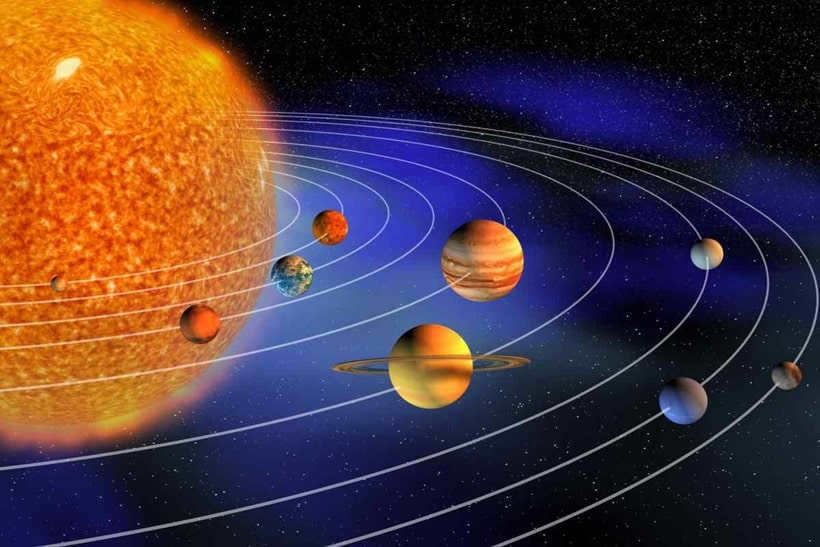
To better understand the path of the sun along the celestial sphere, let’s imagine a typical carousel. As you ride on the carousel in a park, you spin around and observe your surroundings. At first, it may be a bit disorienting. However, eventually your focus settles on the central pole of the carousel and you catch glimpses of objects behind it.
For instance, directly across from you might be the booth of the ride operator, followed by a happy child with a colorful balloon, an ice cream stand, and street performers. Then, unexpectedly, you see the booth once more, this time with a line of people waiting to ride.

However, in order to comprehend the concept of the ecliptic, envision yourself standing on a carousel with the Earth taking your place and the Sun serving as the central base of the structure. In this mental picture, the amusement park transforms into celestial bodies. In reality, our planet is constantly orbiting at a velocity of 30 km/s, resulting in ever-changing views of the sky throughout the day.
Most people do not have the habit of observing the stars during daylight hours. However, if they did, they would have noticed that in March and early April, the constellation Pisces can be seen behind the Sun. As the months progress and the Earth moves to the east, Pisces is replaced by Aries in the middle of spring. This pattern continues, with Taurus entering the sky after completing its journey through the entire constellation. The sequence continues with Gemini, Cancer, Leo, and eventually all twelve constellations become visible from Earth.
Eclipses only occur along the path of the ecliptic, which is why it is named as such.
During a lunar eclipse, the Earth aligns between the sun and moon, creating a shadow. This phenomenon occurs when the moon, either partially or completely, obstructs the sun’s disk. Naturally, lunar eclipses are not a common occurrence as the moon is typically positioned above or below the Earth’s orbital plane.
Unlike the moon, other planets in our solar system are located within the same plane as Earth. This alignment, known as the ecliptic, allows astronomers to accurately determine their positions in the sky. These planets serve as reference points in understanding the west-to-east movement of celestial bodies.
Where the ecliptic and the celestial equator intersect
In the field of astronomy, the intersection of the ecliptic and the celestial equator is a significant phenomenon. The ecliptic is the path traced by the Sun in the heliocentric model of our solar system, while the celestial equator represents the line along which the Earth orbits the Sun within this system.
Moreover, the concept of the celestial equator arises from the Earth’s axial tilt of 23.5 degrees in relation to the perpendicular to the ecliptic. If we were to extend the plane of the Earth’s equator beyond the planet, it would intersect with the plane of the ecliptic, creating a representation of the celestial equator with its distinctive inclination.
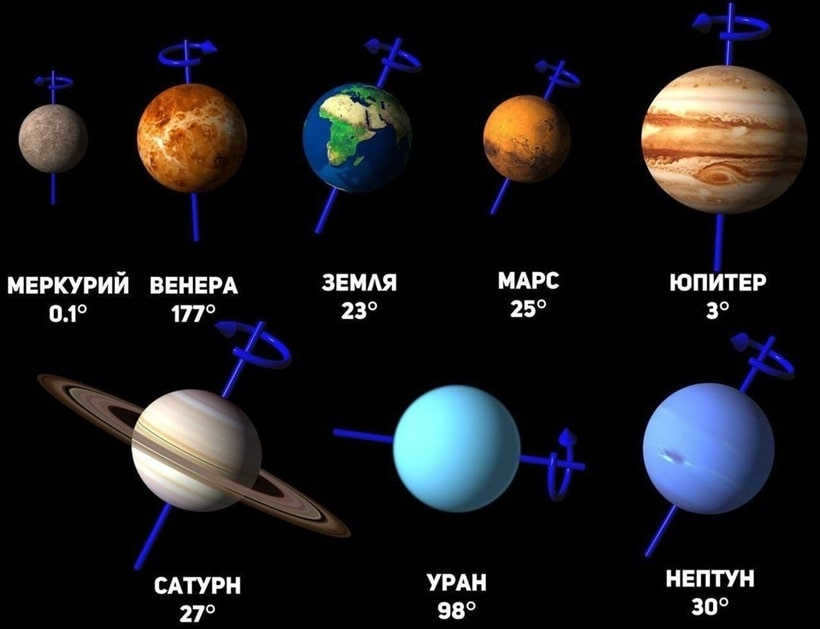

The variation in the length of daylight hours in certain parts of the Earth is caused by the tilt of its axis. Due to this tilt, the Sun’s illumination is uneven, resulting in different periods of revolution around the planet. As a result, there are only two days in a year when night and day are equal.
The spring and fall equinoxes mark the points where the ecliptic intersects with the celestial equator. At these points, the Earth receives equal amounts of light as the Sun is perpendicular to the planet.
The summer solstice occurs when one hemisphere is tilted towards the Sun, while the winter solstice occurs when the opposite hemisphere is tilted towards the Sun.
It is a well-known fact that the Earth spins like a spinning top, causing its tilt to vary. Currently, the axis is pointed towards the North Star. However, this orientation is not fixed and slowly changes in relation to the plane of the Earth’s orbit. As a result, the coordinates of the equinoxes shift.
After a period of 25,776 years, the Earth will complete one full precession cycle, causing the equinox points to return to their original positions.
Origin of the Planetary Orbits in the Solar System
The entire planetary system lies within the same orbital plane known as the ecliptic. This phenomenon can be attributed to the gradual formation of the Sun and other celestial bodies.
During the early stages of the Sun’s formation, gravitational forces caused a vast amount of cosmic dust and gas to accumulate in a specific location. However, it is important to note that astronomical objects are not stationary; they actually “drift” and possess initial velocities and trajectories. As a result, this concentration of matter accumulates and develops its own momentum. Consequently, the newly formed star acquires a direction that aligns with the movement of the surrounding particles.
As a result of this process, a rotating disk of material formed around the Sun, which eventually gave rise to the formation of the planets.
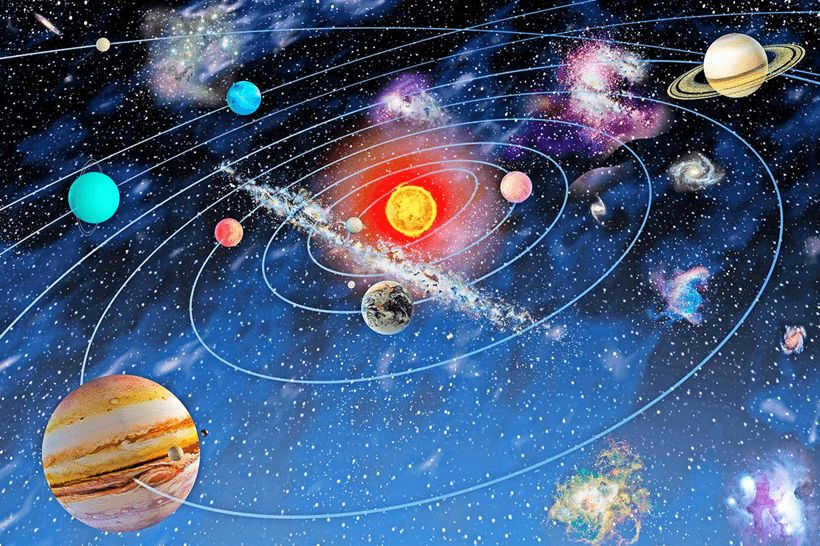
At first, the orbital plane of all the newly formed planets on the celestial map aligns with the same plane as the Earth’s orbit. However, as the solar system takes shape, the presence of celestial bodies like asteroids causes a shift in this plane.
Coordinates of the planetary ecliptic
The angle at which the plane intersects the celestial equator is 23°26′.
The angle at which the plane intersects the celestial equator is 23°26′. This value has remained constant for millions of years. However, according to modern science, it decreases by 48 seconds every century. This change will continue until it reaches a minimum of 22°54′.
One unique feature of the Earth’s orbital path is that all lines connecting it to the Sun, regardless of the timeframe, lie within the same plane. This plane is known as the ecliptic.


If a line were to be drawn vertically from the center of the Sun to our planet, it would intersect at a specific point with the following coordinates:
This particular point is located within the constellation of Draco and is relatively close to the Ursa Major and Ursa Minor. The tilt of Earth’s axis in relation to the ecliptic is the main factor that causes the change in seasons on our planet.
The scientific community uses the ecliptic as the primary coordinate plane.
- Celestial latitude is measured from east to west of the ecliptic, from the South Pole to the North Pole (the pole of the ecliptic being the point where the line perpendicular to the celestial sphere intersects).
- The celestial equator is divided by the ecliptic into two nodes (equinoxes), with the summer and winter solstices located between them.
- The celestial equator is a plane that is intersected perpendicularly by the Earth’s axis of rotation. On maps, the equinox line moves east and west as the stars rotate daily. This is the path along which geostationary satellites are launched.
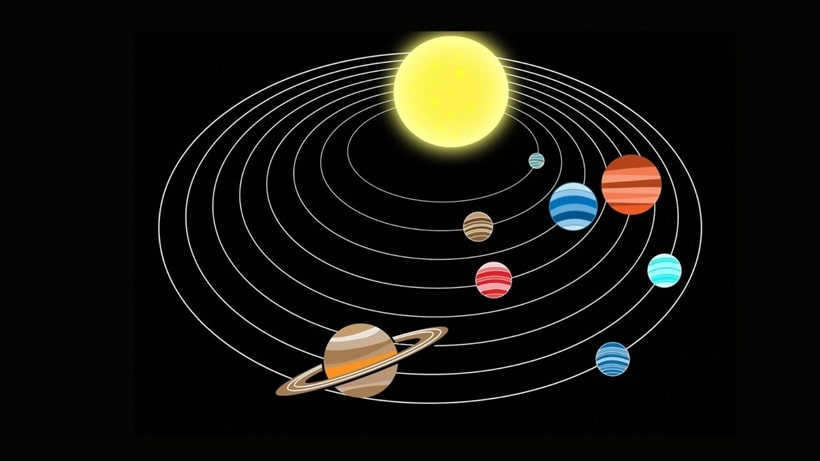
- The equator is named after its main characteristic: the stars near it are equally above and below the horizon. The same phenomenon is observed with the Sun during the equinox. The term “equator” literally means “line of equality”. There is a special system of celestial coordinates, with the ecliptic plane at its core.
Ecliptic and zodiacal constellations.
The intersection of the ecliptic with all twelve zodiacal constellations occurs at four specific points, each represented by a symbol that held significance during the era of the ancient Greek astronomer Hipparchus. This alignment is a result of the gradual shift in the positions of the vernal and autumnal equinoxes, where the celestial equator intersects with the ecliptic, following the apparent annual movement of the Sun across the sky. However, it should be noted that the information regarding the exact locations of these points is no longer up to date.

The current position of the ecliptic on different constellations:
- During the vernal equinox, the ecliptic passes through the constellation Aries;
- During the fall equinox, the ecliptic passes through the constellation Libra;
- During the winter solstice, the ecliptic passes through the constellation Capricorn;
- During the summer solstice, the ecliptic passes through the constellation Cancer.
The zodiac is essentially a line that encircles the celestial sphere near the ecliptic. It is along this path that the Sun, Moon, and planets appear to move. The Sun has very little deviation from the main path, while other celestial bodies often shift either north or south. The Natal chart provides a lot of information about a person’s personality.
The table displays the dates when the constellations intersect the Sun’s ecliptic:
Zodiac Sign
Date of Crossing
Read for 10 minutes
Share

- Astrology for Birth Charts
- Astrology for Relationships
- Personal Growth and Psychology
- Astrology for Future Predictions
- Horoscopes and Forecasts
- Astrological Talismans
- Soul Formulas
- Numerology
- Astrological Tarot Readings
- Global Astrology
- Astrology for Beginners
- Astrology for Professionals
- Advancing as an Astrologer
Take 10 minutes to read.
The Sun’s path through the celestial sphere in a year is known as its ecliptic. The term “ecliptic” comes from the Latin word “ecliptica” and the Ancient Greek word “ἔκλειψις,” which means “eclipse.” In astrology, the Sun passes through 12 constellations (known as the zodiac) along this circle, while in astronomy, it passes through 13. Twice, the ecliptic intersects with the celestial equator, marking the changing of seasons on Earth.
From ancient times, people have observed this movement of the Sun. They used the positions of celestial bodies to create calendars, which helped them carry out agricultural work consistently and at the right times. Over time, people also developed an interest in the Sun’s specific movements along the ecliptic.
It is important to note that the concept of the ecliptic has slightly different meanings in astronomy and astrology. In this article, we will explore these differences and delve into the nature of the Sun’s movement along the zodiacal circle.
The Sun’s Eclipticity in Astronomy
In order to comprehend the phenomena occurring within the solar system, it is crucial to grasp the concept of celestial object ecliptics. The ecliptic of the planets refers to the plane outlined by the orbit of a celestial body, such as the Earth, over the course of a year. This plane occupies the entire space between the Sun and the celestial object around which the former revolves. Essentially, it represents a complete orbit around the luminous star.
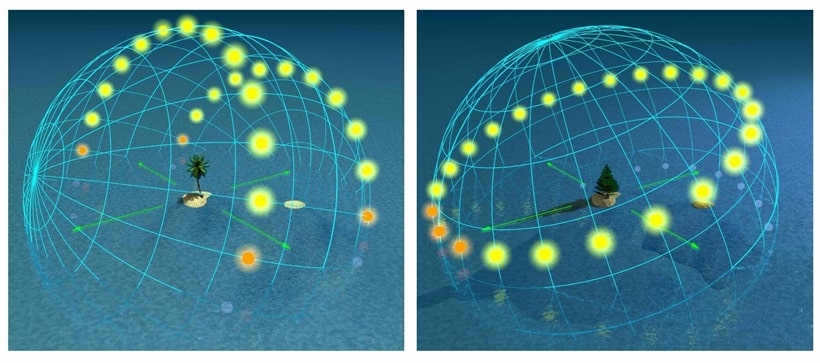
The Ecliptic is a term used in astronomy to describe the path of the Sun through the sky. It is a plane that is created by the Sun’s movement through the 12 constellations. The planets in our solar system also have their own ecliptic planes, which align with the Sun’s plane.
The concept of the “ecliptic” dates back to ancient times. It was the name given to the complete circle in the sky that the Sun traveled across. The word itself comes from Greek and means “eclipse”. This is because ancient observers noticed that during the Moon’s journey along the Sun’s path on the ecliptic, there would be a temporary darkening.
During ancient civilizations, such as the ancient Egyptians, knowledge about celestial bodies and their movement played a significant role in agriculture. Most civilizations settled near rivers, such as the Nile, the Euphrates, and the Yangtze. Through observations, it was discovered that the position of the Sun in the sky changes along with the seasons, affecting not only the climate but also the agricultural cycles of the region.
Even in those early times, it was observed that the Sun deviates from its trajectory on a regular basis, occurring once every 365 days, which corresponds to the annual cycle.

In ancient times, scientists made the discovery that the Sun has two movements: a daily motion from east to west, and an annual motion projected on the sky. These ideas formed the foundation of the theory of the ecliptic.
Eratosthenes, an astronomer in the 3rd century BC, was the first to calculate the Earth’s tilt to be 23°51', regardless of the time of day or year.
Today, the ecliptic circle is widely accepted as the fundamental coordinate system in the movement of our planet and the Sun. There is also a system of ecliptic coordinates, which includes latitude (the distance between the north and south poles of the ecliptic) and longitude (the distance between the east and west).
The equinox line, known as the celestial equator, is a plane that intersects the Earth’s axis of rotation at a 90° angle. Satellites that orbit our planet are positioned within this region. On a star map, you can observe an imaginary line that spans from the western to the eastern horizon.
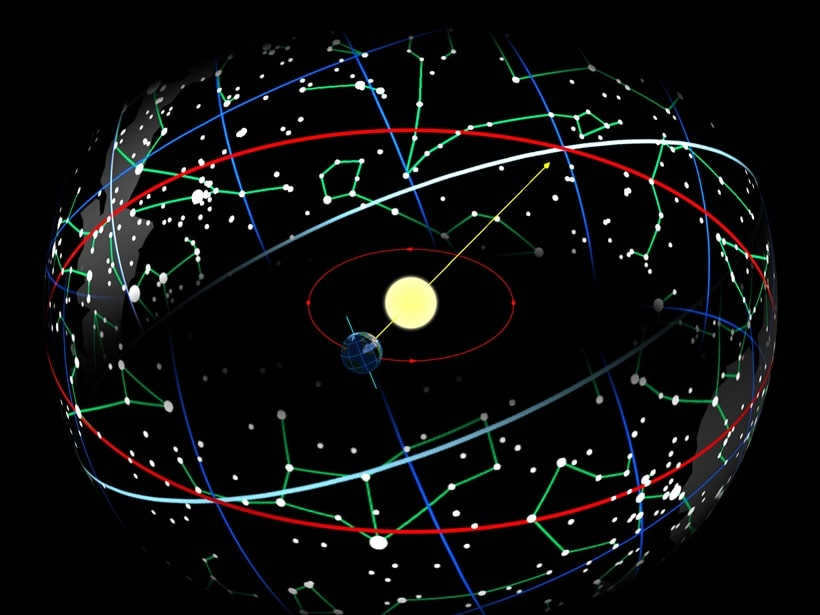
In astronomy, the line of equality in the ecliptic theory is known as the equator. This terminology accurately represents the visual depiction of the sky. Essentially, the stars on one side of this line (above the horizon) spend the same amount of time visible as the stars on the other side of the line (below the horizon). The Sun experiences a similar phenomenon twice a year as it passes the equinox points.
In the realm of astronomical concepts, the ecliptic plane and the celestial equator align perfectly.
The angle they create is referred to as the tilt of the ecliptic, measuring 23°27'. This angle remains constant and unchanging. However, after extensive observation, experts have discovered that it undergoes a slight variation of 48 seconds per 100 years. This gradual change will continue for thousands of years until the angle reaches its minimum value of 22°54'.
It is important to note that the celestial bodies are not precisely aligned with the ecliptic line. While they exist on the same plane as Earth, they are dispersed. This is the reason why eclipses do not happen monthly.
The duration of daylight hours varies across different regions of the globe. This is a result of the tilt of Earth’s axis and the uneven distribution of sunlight on its surface. Equinoxes, which are the days when night and day are of equal length, occur only twice a year: in autumn and spring.

These are the two points where the ecliptic intersects with the celestial equator, and the Earth is positioned relative to the Sun as if tilted. The Sun’s rays shine perpendicular to the equator, evenly illuminating the planet’s surface.
When the hemisphere is tilted towards the Sun, the summer solstice occurs. When it is further away from the star, the winter solstice occurs.
The four points mentioned are marked with zodiac symbols based on the constellations they were located in during the time of Hipparchus of Nicaea (the renowned ancient astronomer). However, the points of the equinoxes (where the ecliptic plane intersects with the celestial equator) have gradually shifted. They are now located:
- The point of the fall equinox is located in Libra.
- The point of the winter solstice is located in Capricorn.
- The point of the summer solstice is located in Cancer.
However, the tilt of our planet is not constant. It changes its direction in space, known as precession. Currently, the Earth’s axis is aligned with Polaris, but it is gradually shifting. As a result, the celestial equator is also moving relative to the ecliptic, causing the equinox points to change.
A complete revolution of this precession will occur in 25,776 years. At that time, the equinoxes will return to their original positions.
The observation of the Sun’s path in the sky
Let’s explore the concept of observing the ecliptic.
Remember, the ecliptic refers to the trajectory that celestial objects, such as stars, follow as they move across the sky, including the Sun and planets. It can be visualized as a line. The optimal time to do this is on a clear night just before the full moon.
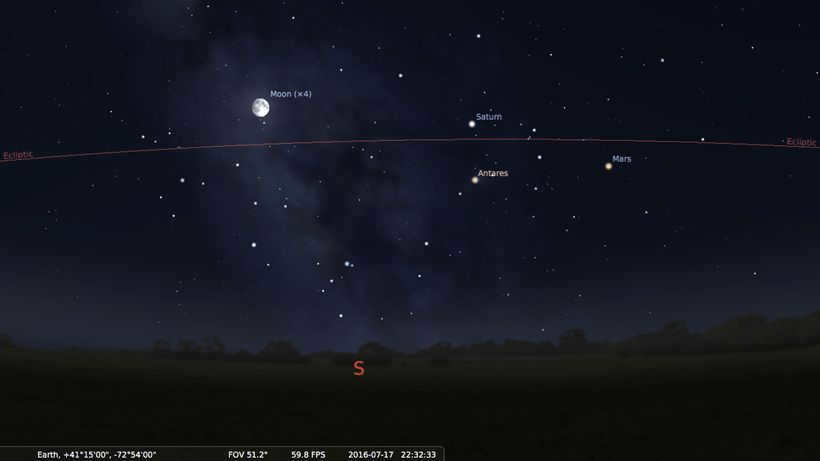
When it is the beginning of the dark period of the day, it is important to be in a place that is not illuminated. If the sky is clear, you can determine the ecliptic line using the following method:
- Above the setting Sun, Venus will be visible.
- In the eastern direction, the Moon will rise above the horizon.
- Above the Moon, Mars will be the third point.
- After a few hours, Saturn will rise in the east – this will be the fourth point.
Now, you can mentally connect all the points together to form a single line. This line represents the ecliptic.
Astrology: The Sun’s Ecliptic
The Sun’s ecliptic is the trajectory it follows as it moves through the twelve zodiac constellations and the Serpentine over the course of a calendar year. This path closely aligns with the orbital planes of other celestial objects within our solar system.
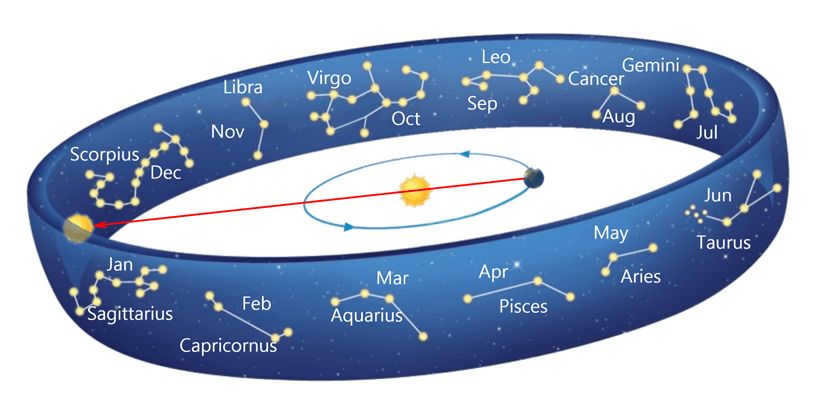
The zodiac is a circular arrangement of constellations (ζῷον – living being) in the sky. It is like a celestial belt that encompasses approximately 9° on each side of the ecliptic. Only the sun follows this path, while the orbits of the planets deviate from it by 17°. As a result, our solar system is situated within a narrow belt known as the zodiac.
The zodiacal belt is divided into 12 segments of 30 degrees each, which correspond to the signs of the zodiac. The counting begins from the vernal equinox when the sun enters the sign of Aries. The sequence continues with Taurus, Gemini, Cancer, Leo, Virgo, Libra, Scorpio, Sagittarius, Capricorn, Aquarius, and Pisces. Together, these signs form a complete circle of 360° or one year. It takes the sun approximately a month to traverse each constellation.

The Sun passes through each of the zodiac signs for a different number of days. However, the durations in astronomical and astrological calendars rarely align.
Even within astrological calendars, there can be variations. The durations of the signs may not align exactly, but the differences are minimal. For instance, Scorpio, which has its dominion ending on either November 21 or 22. This creates ambiguity for individuals born on the 22nd, as it is uncertain whether they belong to Scorpio or Sagittarius.
The boundaries marking the beginning and end of each sign are indistinct.
The boundaries of the start and end of the periods are somewhat indistinct. And every four years, when February has 29 days, they shift completely. It can be challenging at times to determine the exact zodiacal period for each individual. This requires knowledge of the birth year.
The ecliptic sector (or ecliptic longitude) corresponds to specific zodiac signs:
- 00° – 30° – Aries (March 21 – April 20).
- 30° – 60° – Taurus (April 21 – May 20).
- 60° – 90° – Gemini (May 21 – June 21).
- 90° – 120° – Cancer (June 22 – July 22).
- 120° – 150° – Leo (July 23 – August 23).
- 150° – 180° – Virgo (August 24 – September 24).
- 180° – 210° – Libra (September 24 – October 23).
- 210° – 240° – Scorpio (October 24 – November 22).
- 240° – 270° – Sagittarius (November 23 – December 21).
- 270° – 300° – Capricorn (December 22 – January 21).
- 300° – 330° – Aquarius (January 21 – February 19).
- 330° – 360° – Pisces (February 20 – March 20).
It is important to note that there are two distinct concepts that share a similar name.
There is the zodiac as a general term and the astronomical concept. The latter refers to the band of the sky that encompasses all the zodiacal constellations. From an astronomical perspective, the count starts from the day of the vernal equinox, which is known to be in the constellation of Aries.
However, this point gradually shifts over time, about 1° every 70 years. As a result, the current position of the vernal equinox is no longer far from its original location. The astronomical zodiacal constellations are named the same as the astrological constellations.
We can determine our zodiac sign by using both the regular calendar and the Sun’s position on the ecliptic. It’s important to note that astrological signs and astronomical periods may not always align. For instance, the Sun spends only 7 days in Scorpio, but 45 days in Virgo.


Let’s explore the astronomical intervals of the zodiac signs:
- Aries – from March 19 to May 13.
- Taurus – from May 14 to June 19.
- Gemini – from June 20 to July 20.
- Cancer – from July 21 to August 9.
- Leo – from August 10 to September 15.
- Virgo – from September 16 to October 30.
- Libra – from October 31 to November 22.
- Scorpio – from November 23 to November 29.
- Sagittarius – from December 18 to January 18.
- Capricorn – from January 19 to February 15.
- Aquarius – from February 16 to March 11.
- Pisces – from March 12 to April 18.
Based on recent studies, a new zodiac constellation known as the Serpentine has been discovered. Positioned between Scorpio and Sagittarius, the Sun now transitions through this sign from November 30 to December 17, tracing its path along the southern edges. Surprisingly, despite its existence, astrologers have chosen to disregard the Serpentine completely, giving it no consideration whatsoever.

Our Sun, the most extensively examined star, holds great significance for us as it is crucial for sustaining life on Earth. Over the course of its observation, what insights have we garnered about this celestial body?
The Position of the Sun within the Galaxy
Despite its vast size compared to our planet and other planets on a galactic scale, the Sun is not the largest star and is relatively small. There exist stars that are much larger than the Sun. Consequently, astronomers classify our star as a yellow dwarf.
Regarding the Sun’s location within the galaxy, including the entire solar system, it resides within the Milky Way galaxy, closer to the edge of the Orion arm. The distance from the galactic center is roughly 7.5-8.5 thousand parsecs. Essentially, we are neither situated at the outer reaches of the galaxy nor in its central core. Instead, we occupy a sort of “galactic suburban area,” not on the outskirts but also not in the heart of it all.
This is how the Sun’s position appears on a galactic map.
Precautions to Take While Observing
Although the Sun may not be the largest star, it is still incredibly powerful and relatively close to us. As a result, it appears very bright from Earth. In comparison, the Full Moon, despite being against the dark night sky, is significantly less dazzling.
It is safe to observe the Sun with the naked eye only during sunrise or sunset, when the intensity of its brightness decreases significantly. However, it is extremely dangerous to look directly at the Sun during daylight hours. Additionally, using magnifying optical devices, such as binoculars or telescopes, without proper protection is strictly prohibited. Doing so can cause severe eye burns and even blindness.
In order to prevent permanent damage to vision in astronomical observatories, it is recommended to utilize specialized solar telescopes. These telescopes are equipped with dense light filters that effectively reduce brightness. Similarly, when conducting amateur observations, it is imperative to use a special filter when observing the Sun. This filter should be placed in front of the instrument’s lens.
Alternatively, one can project the desired object onto a screen using a telescope. Even a small amateur telescope can be used to study features such as spots or granulation on the Sun’s surface using this method. However, caution must be exercised to avoid damaging the telescope itself. It is advisable to carefully review the instructions to prevent any mishaps.
Studying various celestial bodies, whether they are satellites of the Sun or the Sun itself, is incredibly fascinating. And professional observations and scientific research are particularly valuable in this regard. This knowledge has the potential to greatly benefit humanity in the future.
Key Features of the Sun
Based on the astronomical classification of celestial objects, the Sun falls under the G-class star category and is brighter than 85% of the other stars in our galaxy, many of which are red dwarfs. With a diameter of 1.391 million kilometers and a mass of 1.988 x 1030 kg, the Sun is 109 times larger and 333,000 times more massive than Earth.
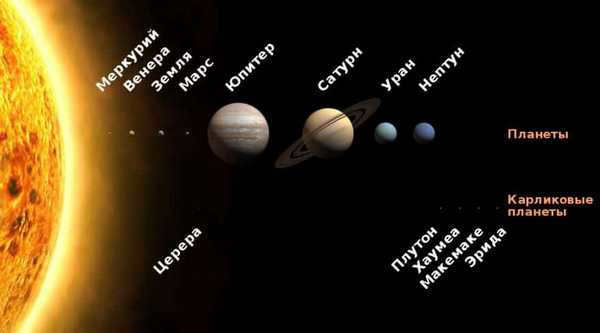
Comparison of sizes between the Sun and the planets.
While the Sun may appear yellow to us, its true color is actually white. The yellow hue that we see is a result of the Sun’s atmospheric conditions.
The temperature of the Sun’s upper layers is approximately 5778 degrees Kelvin, but as we move closer to its core, the temperature rises significantly, reaching an astonishing 15.7 million degrees Kelvin.
In addition, the Sun possesses a strong magnetic field, with both northern and southern magnetic poles on its surface. These magnetic lines experience periodic readjustments every 11 years, resulting in intense solar emissions. The Sun’s magnetic field also has an impact on Earth’s own magnetic field.
Structure and Composition of the Sun
The Sun is primarily made up of two elements:
Hydrogen (74.9%) and helium (23.8%). Additionally, there are trace amounts of oxygen (1%), carbon (0.3%), neon (0.2%), and iron (0.2%). Internally, the Sun can be divided into different layers:
The core of the Sun, which has the highest density, makes up approximately 25% of the total solar volume.
The structure of the Sun is depicted schematically.
Within the solar core, thermal energy is generated through nuclear fusion, converting hydrogen into helium. Essentially, the core acts as the Sun’s engine, producing heat and warming all of us.
Solar wind
The solar wind is a constant flow of plasma originating from the atmosphere of the sun and spreading throughout the entire solar system. This phenomenon occurs as a result of the high temperatures present in the solar corona, which cause an imbalance in pressure between the corona and the surrounding layers. Consequently, there are periodic releases of solar plasma into the surrounding space. You can find a comprehensive article on the topic of solar wind on our website.
The evolution of the Sun and its future
Scientists estimate that our star is approximately 4.57 billion years old. During its formation, it originated from a portion of a molecular cloud composed of hydrogen and helium.
How did the Sun come into existence? According to a hypothesis, the helium-hydrogen molecular cloud began to rotate due to angular momentum, leading to a significant increase in internal heat and pressure. As a result, the majority of mass accumulated at the center, giving birth to the Sun itself. The intense gravity and pressure triggered the fusion of atomic nuclei, which powers not only the Sun but also other stars.
Mercury, Venus, and potentially our own Earth. Assuming our planet manages to endure, it will no longer be habitable at that point. In approximately 2 billion years, the Sun’s brightness will intensify to such an extent that all of Earth’s oceans will evaporate, resulting in a parched and barren landscape. Surface temperatures will reach a scorching 70°C, making life only feasible in the depths below. Therefore, we still have roughly a billion years to discover a new refuge for humanity in the far-flung future.
Returning to the Sun, after transforming into a red giant, it will stay in this state for approximately 120 million years before the process of shrinking and cooling commences. When the remaining helium in its core is depleted in the constant furnace of thermonuclear reactions, the Sun will lose its stability and undergo a planetary nebula explosion. During this stage, Earth and its neighboring planet Mars are highly susceptible to destruction caused by the solar explosion.
In another 500 million years, the solar nebula will give rise to a white dwarf that will endure for countless more trillions of years.
A Single Year on Earth
As our planet orbits around the Sun, it travels at an impressive speed of approximately 30 kilometers per second. This journey takes one full year, during which the Earth covers a distance of over 930 million kilometers. At its closest point to the Sun, the Earth is about 147 million kilometers away, while at its farthest point, it reaches a distance of 152 million kilometers.
Throughout the year, the Sun’s apparent movement as seen from Earth changes, creating a trajectory that resembles a stretched figure-eight shape. This path follows the Earth’s axis, extending from north to south at a forty-seven degree angle.
The reason for this phenomenon is the Earth’s axial tilt, which is approximately 23.5 degrees away from the perpendicular to the plane of its orbit. As the Earth revolves around the Sun, the angle of incidence of the Sun’s rays changes daily and hourly at any given point, except for the equator where day and night are equal.
During summer in the northern hemisphere, the Earth is tilted towards the Sun, resulting in the Sun’s rays illuminating the Earth’s surface with maximum intensity. However, in winter, the path of the Sun’s disk in the sky is much lower, causing the Sun’s rays to fall on our planet at a steeper angle and thus heating the Earth less intensely.
Winter is the season when significant transformations start to occur, shortly after the winter solstice, when the Sun’s path in the sky alters and it starts to ascend.
Consequently, as spring arrives, the Sun gets closer to the vernal equinox, the point at which the length of day and night becomes equal. During summer, on June 21st, which marks the summer solstice, the Sun reaches its zenith, the highest point above the horizon.
Fun facts about the Sun
- Within the Sun, you could fit a million Earths or planets the size of our own.
- The Sun is shaped like an almost perfect sphere.
- It takes approximately 8 minutes and 20 seconds for the Sun’s rays to travel from its source to reach us, despite the fact that the Earth is 150 million kilometers away from the Sun.
- The term “Sun” originates from the Old English word for “South”.
- We regret to inform you that in the future, the Sun will scorch the Earth and eventually obliterate it. However, this is projected to occur no earlier than two billion years from now.
Earth Day
When an earthling gazes at the sky, pondering why the Sun shines during the day and where it emerges, they will discover that the Sun ascends in the east and sets in the west. This phenomenon occurs due to our planet’s dual motion: revolving around the Sun and rotating on its axis, completing a full revolution every 24 hours. If viewed from space, the Earth, like most of the Sun’s planets, rotates counterclockwise, from west to east. However, when standing on Earth and observing the morning horizon, everything appears in reverse, causing the Sun to appear to rise in the east.

